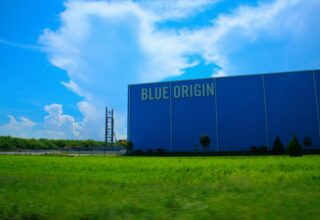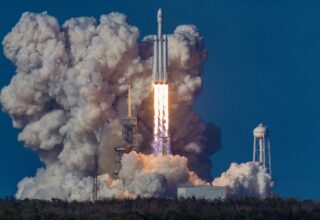By becoming a member of our site, you can add the content you like to your favorites, and present the content you have produced or liked on the internet to our site visitors with the send content option.
Zaten bir üyeliğiniz mevcut mu ? Giriş yapın
By becoming a member of our site, you can add the content you like to your favorites, and present the content you have produced or liked on the internet to our site visitors with the send content option.
You Can Benefit from All Options Exclusive to Our Members by Registering
Next Content:
Amazon’s Disruptive Innovations: Examining Jeff Bezos’ Entrepreneurial Journey
- Home Page
- #ApolloProgram
- NASA’s Historic Moon Missions: Apollo Program and the First Lunar Landing
NASA’s Historic Moon Missions: Apollo Program and the First Lunar Landing
The Apollo Program, led by NASA (National Aeronautics and Space Administration), stands as one of the most remarkable and awe-inspiring endeavors in the history of human exploration. It represents a pivotal moment in scientific discovery and serves as a testament to human ingenuity, courage, and determination. This article provides a comprehensive and detailed account of NASA’s historic moon missions, with a particular focus on the groundbreaking Apollo Program and the monumental achievement of the first lunar landing.
The Apollo Program and its Objectives
The Apollo Program, spanning from 1961 to 1972, was an ambitious and monumental undertaking aimed at landing humans on the moon and returning them safely to Earth. The primary objectives of the program were not only to explore the lunar surface but also to conduct scientific experiments, gather valuable data, and advance our understanding of the moon’s geology, atmosphere, and potential for future human exploration. The program sought to push the boundaries of human capabilities, technology, and knowledge, while inspiring generations with the audacity and magnitude of the mission.
Apollo Missions and Astronauts
The Apollo Program consisted of a series of progressively complex missions, each building upon the knowledge and experience gained from its predecessors. A total of 17 missions were conducted, numbered from Apollo 1 to Apollo 17, with several notable missions that captured the world’s attention. These missions involved a carefully orchestrated sequence of launch, lunar orbit, lunar landing, moonwalks, and return to Earth.
One of the most iconic and significant missions in the Apollo Program was Apollo 11, which achieved the historic feat of landing humans on the moon for the first time. On July 20, 1969, the lunar module named “Eagle” touched down on the lunar surface, carrying astronauts Neil Armstrong and Buzz Aldrin. Neil Armstrong took the momentous first step onto the moon, delivering his famous words, “That’s one small step for man, one giant leap for mankind.” This unprecedented achievement marked a turning point in human history and symbolized the triumph of human exploration and discovery.
Technological Innovations and Challenges
The Apollo Program necessitated the development of cutting-edge technologies and engineering marvels. It demanded advancements in rocketry, spacecraft design, life support systems, navigation, and communication. One of the most significant technological breakthroughs was the development of the Saturn V rocket, a colossal and powerful launch vehicle that propelled the Apollo spacecraft into space. Additionally, the Lunar Module, designed specifically for lunar landings, showcased incredible engineering feats and precision.
However, the Apollo Program was not without its challenges and tragedies. The Apollo 1 mission, intended as a prelude to the lunar missions, experienced a catastrophic fire during a ground test, resulting in the loss of the entire crew, consisting of astronauts Gus Grissom, Ed White, and Roger Chaffee. This tragic event led to a comprehensive review and revision of safety protocols, ultimately enhancing the program’s reliability and ensuring the safety of future astronauts.
Legacy and Scientific Contributions
The Apollo Program’s legacy extends far beyond its remarkable achievements. The missions brought back invaluable samples of lunar rocks and soil, providing scientists with a wealth of data to study the moon’s composition, geology, and history. These samples continue to yield new discoveries and insights, contributing to our understanding of the moon’s formation and evolution. The Apollo missions also paved the way for subsequent robotic missions, such as the Lunar Reconnaissance Orbiter and the recent Artemis program, which aims to return humans to the moon in the near future.
The Apollo Program and its historic moon missions remain a testament to the boundless potential of human exploration and the unwavering spirit of discovery. The program not only achieved the monumental feat of landing humans on the moon but also left an indelible impact on science, technology, and our collective imagination. The Apollo missions exemplify humanity’s relentless pursuit of knowledge and inspire us to continue pushing the boundaries of what is possible, both on Earth and beyond.
Explore the historic moon missions of NASA’s Apollo Program, including the groundbreaking first lunar landing. Learn about the objectives, missions, astronauts, technological innovations, challenges, and scientific contributions of this remarkable era in space exploration. Discover the legacy of the Apollo Program and its impact on our understanding of the moon and the future of human space exploration.
- On-Site Comments























